Key Steps to Cleansing Southern California’s Air
Diesel Class 8 vehicles run seemingly tail-to-nose from the Ports of Lengthy Seaside and Los Angeles to the Inland Empire in Southern California. There, the cities of Ontario, San Bernardino, Rialto, Riverside and others have seen huge warehouses constructed for storing and transferring items sure for retailers after which on to customers. On their 100+ mile spherical journey, these vehicles burn diesel gasoline that damages the ozone, spews out noxious particulates that hunt down lungs and eyes together with oxides of nitrogen that assist create smog, together with different nasty—and poisonous—unpleasantness. On scorching days it may be felt weighing you down, your pores and skin is sticky, and is so thick it appears doable to the touch.
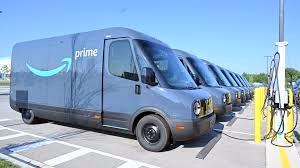
Virtually all of these vehicles run on diesel, however change is coming. Increasingly more, particularly the smaller “final mile” vehicles, are powered by electrical energy. FedEx, Amazon and others are making the swap to electrical energy, as are college buses and rubbish vehicles. Even the U.S. Put up Workplace shall be changing a sizeable portion of its fleet of electrical vans.
There is no such thing as a debating the necessity for vehicles of all sizes, from the semis that roam the nation’s highways to smaller field vehicles, supply vans and the widespread pickup. As Jimmy Hoffa, the late president of the Worldwide Brotherhood of Teamsters mentioned, “If you happen to bought it, a truck introduced it to you.”
It is going to take time, funding and forward-thinking politicians and trucking corporations, however each diesel burning truck that may be faraway from the roadways will help in cleaner air.
A Important First Step
A step within the course of cleansing the air in Southern California has been made by the Joint Electrical Truck Scaling Initiative (JETSI). The lead challenge accomplice, NFI, a third-party provide chain supplier with headquarters in New Jersey. NFI constructed an all-electric port drayage facility in Ontario, California. On what was a dust lot a pair years in the past now stand 38 DC quick chargers sourced by means of Electrify America. Jim O’Leary, NFI vice chairman of fleet companies, mentioned the “enthusiasm and dedication (of the companions) have been indispensable and collectively, we’re revolutionizing the trucking trade and paving the way in which in direction of a cleaner, extra sustainable future.”
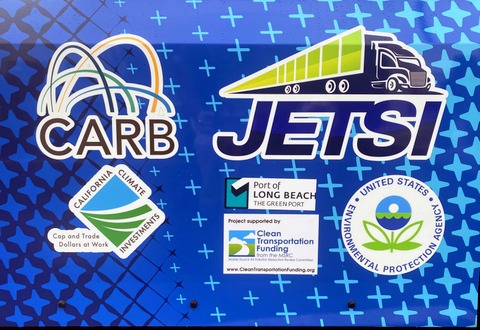
Liane Randolph, chair of the California Air Sources Board, one of many challenge’s state funders, mentioned: “Drayage vehicles journey quick distances between ports and regional warehouses, making them perfect candidates for zero-emissions know-how, and this challenge in Ontario is an exemplary mannequin for the way forward for freight transport.”
The ability is good, but it surely means nothing with no fleet of battery-electric vehicles plugging-in every day. Initially Daimler Truck North America’s Freightliner eCascadia and Volvo Vans North America’s VNR Electrical vehicles will make-up a fleet of fifty battery-electric Class 8 vehicles within the JETSI challenge.
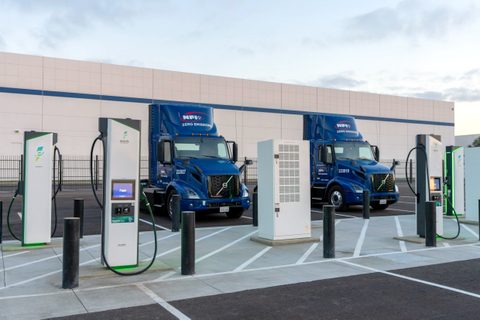
The NFI facility additionally has a restore and repair heart, totally outfitted with educated employees to maintain the preliminary 50 vehicles on the highway. The vehicles sometimes run two port pickups per day, per truck, for a median of 220 miles pushed earlier than being recharged.
The potential of lowering greenhouse gases and emissions is encouraging. Simply these 50 vehicles and their two, 100+ mile each day spherical journeys will roughly remove 4,400 metric tons (Notice: 2,000 kilos is a ton, whereas 1,000 kilograms is a metric ton) of greenhouse fuel emissions yearly, together with 2.45 tons of pollutant emission reductions and displacing greater than 2.75 million gallons of diesel over the approaching five-years.
For perspective, greater than 22,000 vehicles are registered to serve the ports of LA and Lengthy Seaside. These 50 are a part of a rising variety of zero emission vehicles which can be shrinking the diesel portion of that quantity. Rules are in place calling for all new vehicles added to that registry to be zero emission (both battery or gasoline cell powered).
The JETSI Challenge All-Electrical Vans
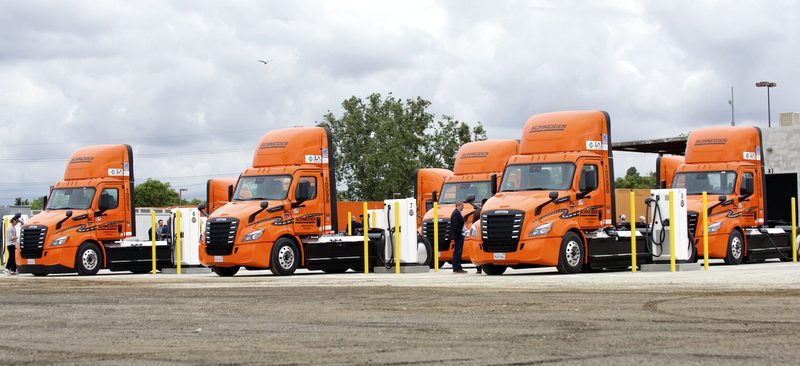
The Freightliner eCascadia is accessible as a single or tandem eAxle.
Single Drive
Lengthy Vary: 230 miles
Normal Vary: 155 miles
Cost Time: 80% in 90 minutes
Charging Energy: 190kW with single port; 270 kW with twin ports
Complete Gross Weight (TGW): 65,000 kilos
Efficiency: 320 horsepower (HP) or 395 HP
Tandem Drive
Vary: 220 miles
Cost Time: 80% in 90 minutes
Charging Energy: 190kW with single port; 270 kW with twin ports
TGW: 82,000 kilos
Efficiency: 425 horsepower (HP) or 470 HP
The Volvo VNR Electrical is accessible in tractors with 4×2, 6×2 and 6×4 configurations.

4×2
Vary: 175 miles
Cost Time: 80% in 90 minutes
Charging Energy: As much as 270 kW
TGW: 66,000 kilos
Efficiency: 455 horsepower HP
6×2 and 6×4
Vary: 275 miles
Cost Time: 80% in 90 minutes
Charging Energy: As much as 270 kW
TGW: 82,000 kilos
Efficiency: 455 HP
Notes:
- Each manufacturers have regenerative braking that returns electrical energy to the batteries when coasting or braking.
- High pace for each is between 65 and 68 miles per hour
Further All-electric, Class 8 Vans
There are a number of different producers constructing all-electric Class 8 semi vehicles. Whereas not a part of the JETSI challenge, they provide the identical zero emission answer to heavy hauling.
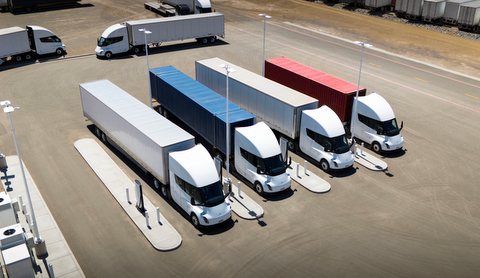
Battery Electrical
- Tesla Semi
- Nikola TRE
- Kenworth T680E
- Peterbilt 579EV
- BYD 8TT
- Lion Electrical LION8T
- Battle Motors LNT
- Windrose
Hydrogen Gasoline Cell Electrical
- Nikola TRE FCEV
- Hyundai Xcient
- Peterbilt 579HFC
- Hyzon HYHD8
The Pressing Want To Cut back Emissions
Air air pollution is pervasive in any metropolitan space, however the hall between the Ports of Lengthy Seaside and Los Angeles, and Southern California’s Inland Empire is among the many worst within the nation. Idling diesel vehicles on the ports ready to be loaded and unloaded are matched by vehicles idling on the warehouses within the Inland Empire. All that site visitors has created a cussed and harmful air high quality downside for residents of the area. Regardless of of emissions enhancements in vehicles over the previous 20 years, respiratory well being issues, together with bronchial asthma, bronchitis and most cancers persist. Youngsters and the aged are essentially the most prone, however everybody and anybody that breathes is an unwitting goal of this awful air.
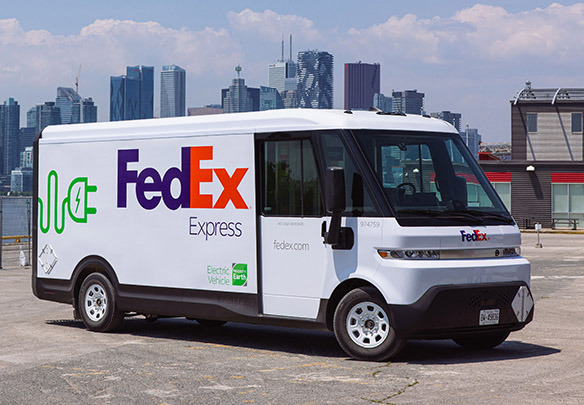
Clear air is private because it impacts folks of all races, genders, and ages. Black, Latino, immigrant and low-income neighborhoods are sometimes the place these warehouse amenities are primarily based, putting an added burden to their well being.
The JETSI challenge could also be a check, however the consequence is already identified. These 50 all-electric Class 8 vehicles are solely the start of the answer to air air pollution on this a part of California. It’s definitely not sufficient by any means, however the upside to changing diesel vehicles with zero emission battery or gasoline cell electrical vehicles is simply too tantalizing to think about. How a lot cleaner may the air be if, as an alternative of fifty vehicles, it’s 500, 1,000 or 10,000. The teachings discovered from this challenge will encourage ports and truck fleets from across the nation, and the world, to ditch their soiled diesel rigs for zero emission electrical vehicles.
Addendum
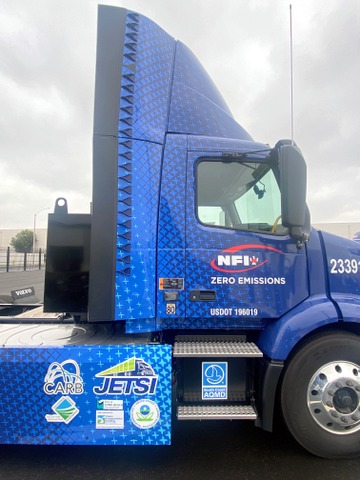
After we attended the JETSI, the excellent news of freight electrification in Southern California has continued. A number of charging depots geared to supply the high-powered charging wanted for these vehicles have opened within the hall between the ports and the Inland Empire. The variety of zero emission vehicles working within the space is now within the tons of and will high 1,000 quickly. The federal EPA awarded $411 million to the Port of LA so as to add extra zero-emission gear for its cargo dealing with operations. A further 250 zero emission vehicles in addition to 300 chargers shall be funded by the grant. This grant adopted an earlier $500 million from EPA to the South Coast Air High quality Administration District, which shall be used to get additional zero-emission vehicles, supply autos and locomotives into operation.
In one other effort at growing the variety of zero-emission vehicles serving the ports, the “inexperienced financial institution” Local weather United, working with the charging developer Discussion board Mobility, has created a devoted $250 million fund. The intent is to supply low-cost financing to smaller fleets and proprietor operators for buy of as much as 500 zero-emission vehicles.
Make sure that to opt-in to the Clear Fleet Report publication (high proper of web page) to be notified of all new tales and car opinions.
Story by John Faulkner, with further data from Michael Coates. Photographs by John Faulkner and the producers.
The publish Information: All-Electrical Semi-Vans Making a Distinction first appeared on Clear Fleet Report.


